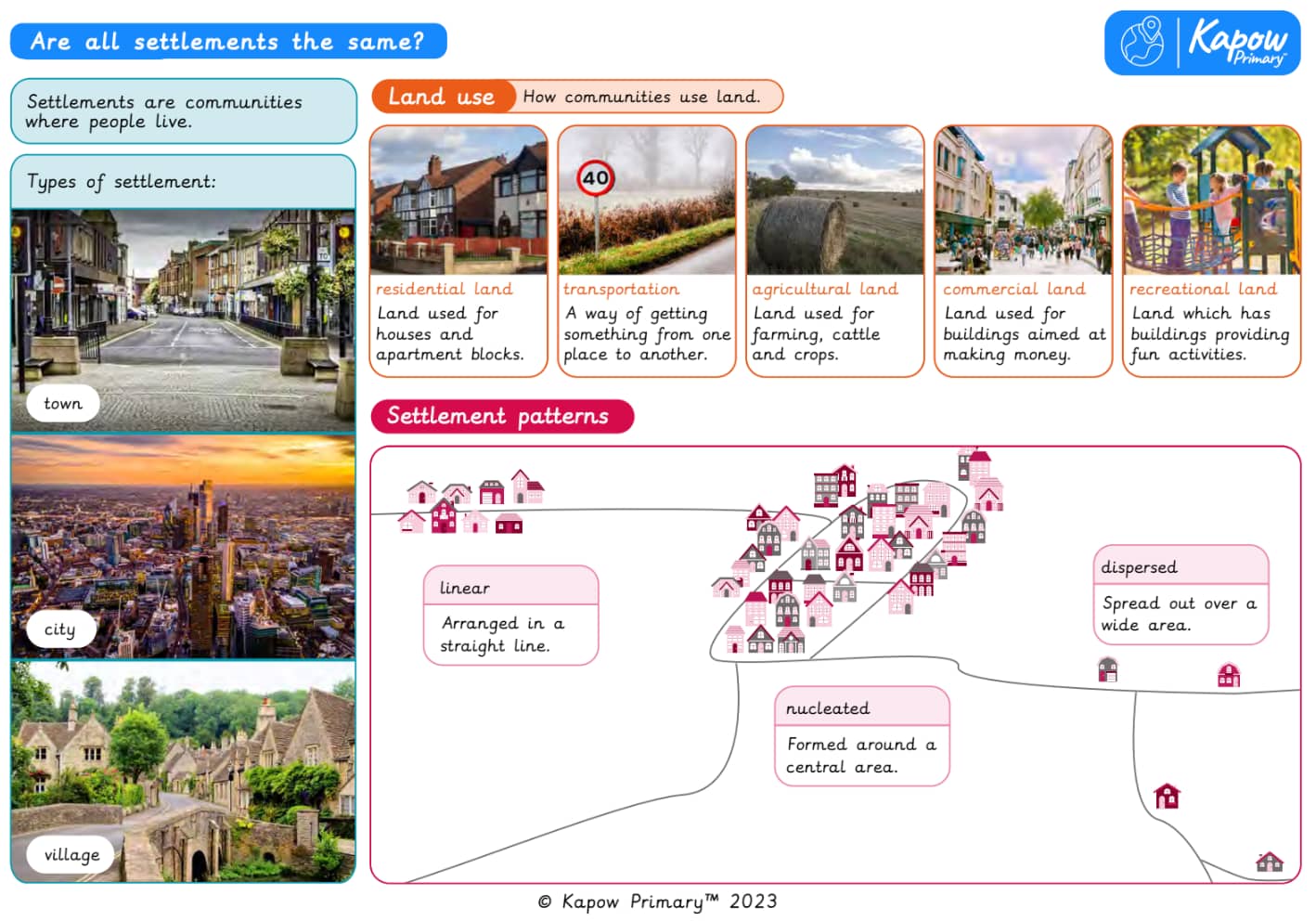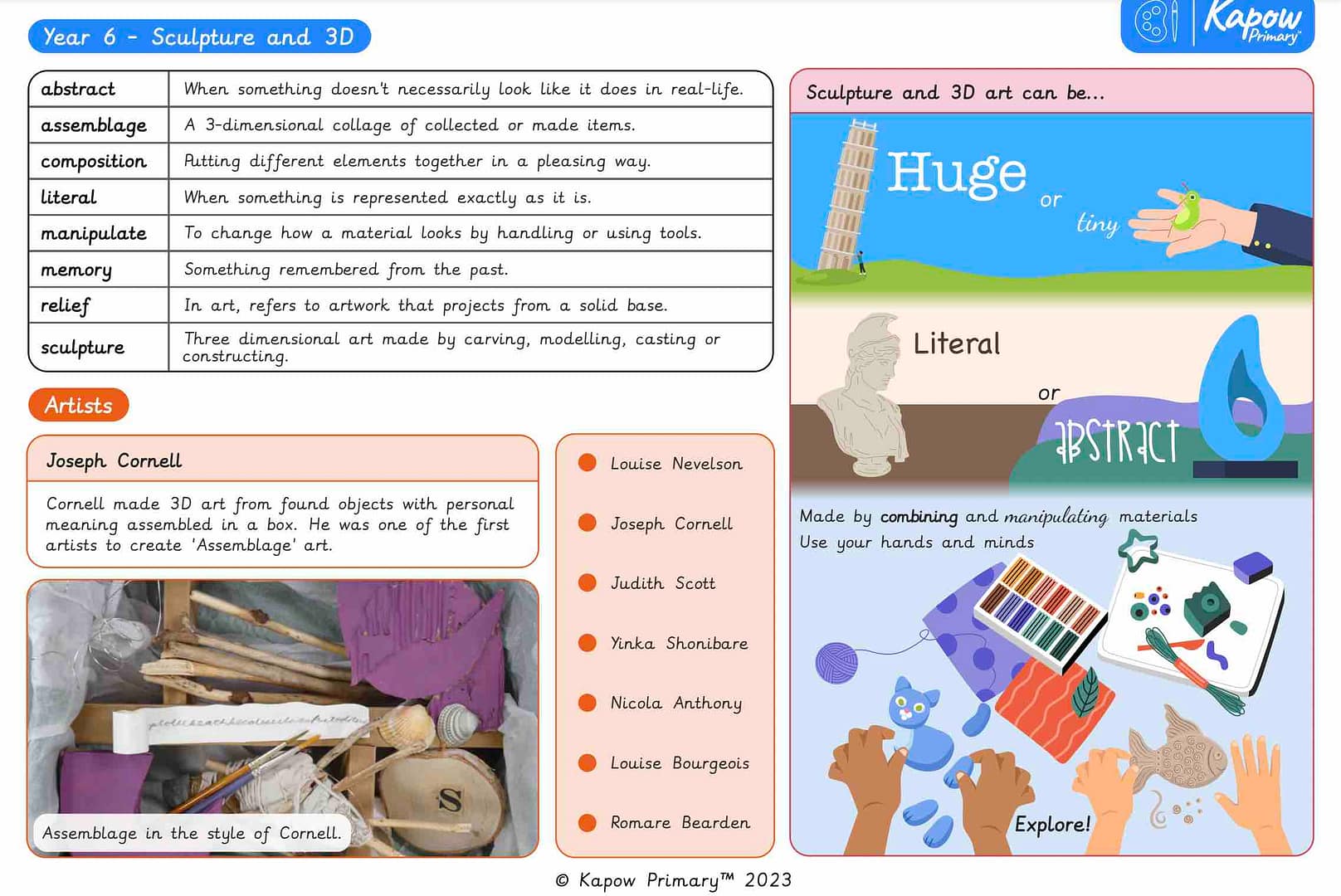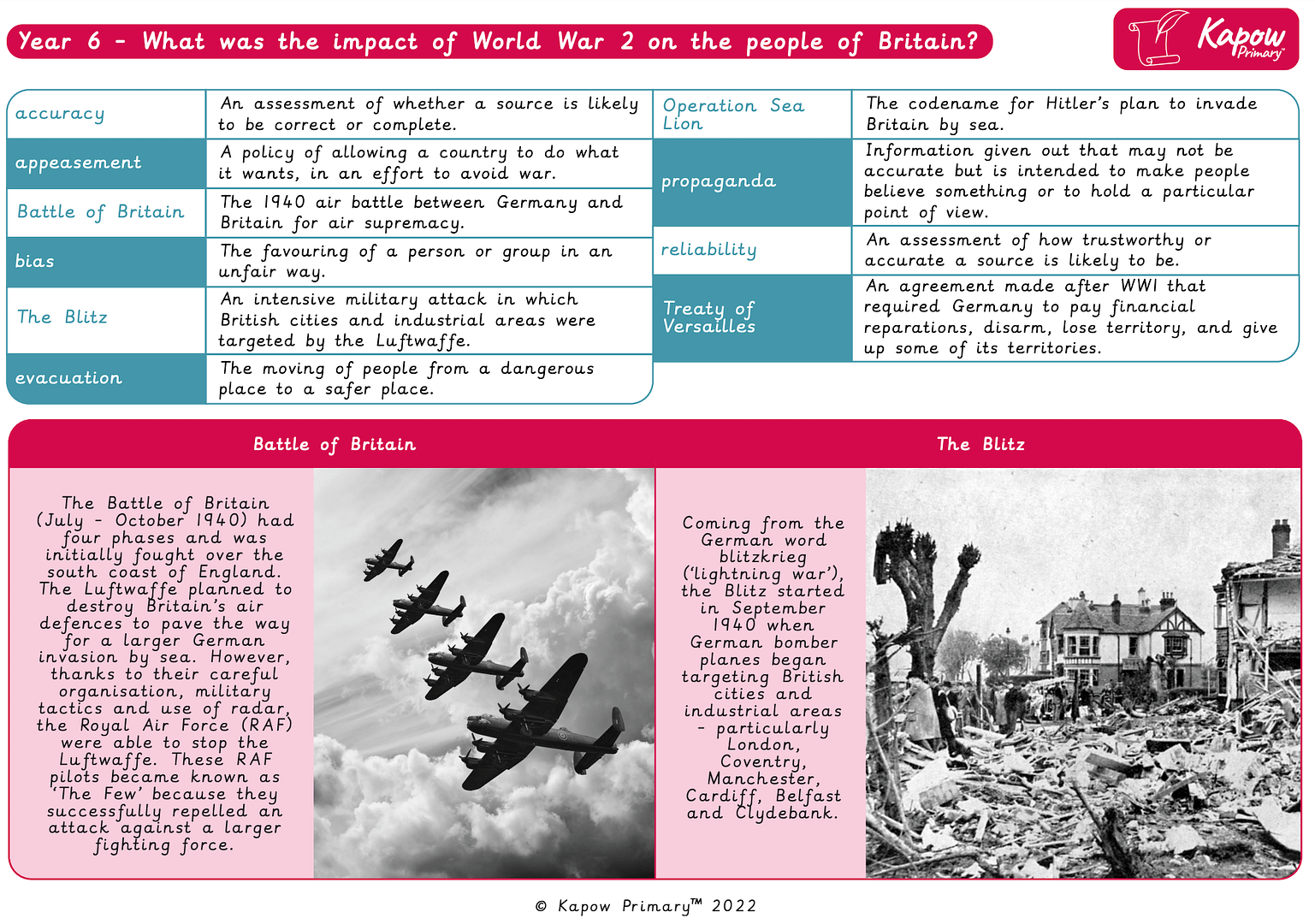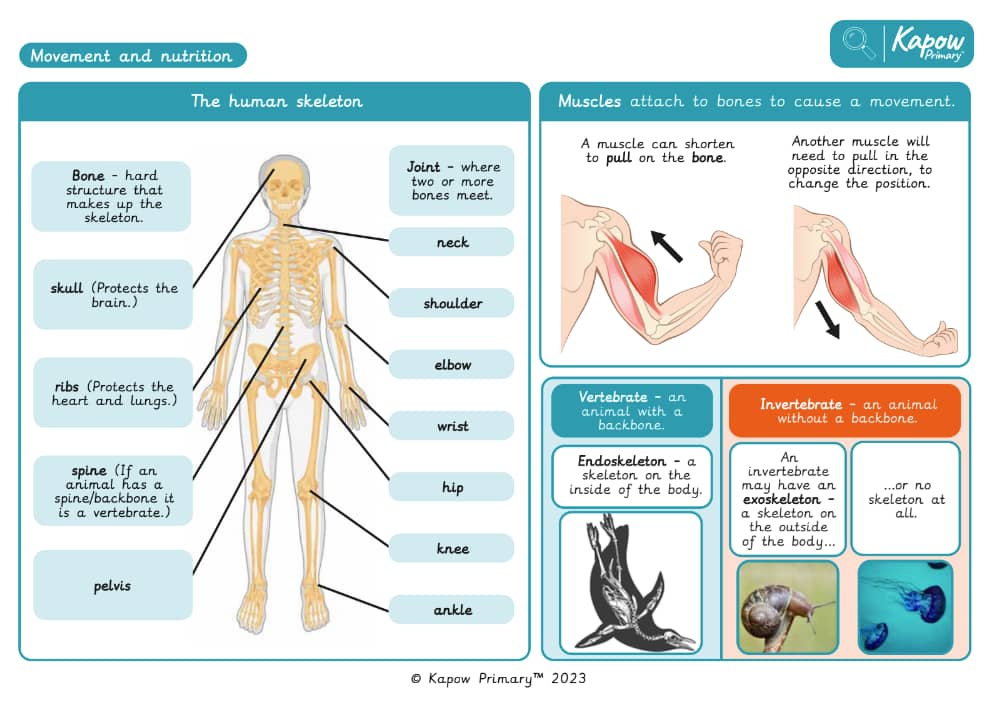
A Knowledge organiser that captures the essential knowledge and skills learnt throughout the unit Science, Year 3, Animals, including humans: Movement and nutrition.
This resource is designed to support the children as they explore movement and nutrition. It highlights key vocabulary and concepts, including the human skeleton, joints, muscles and how they work together to enable movement. The resource also introduces vertebrates and invertebrates and explains the role of endoskeletons and exoskeletons. The children will learn about the seven essential nutrient groups needed for survival and the importance of a balanced diet. It is perfect for consolidating essential knowledge and fostering an understanding of how our bodies move and stay healthy.
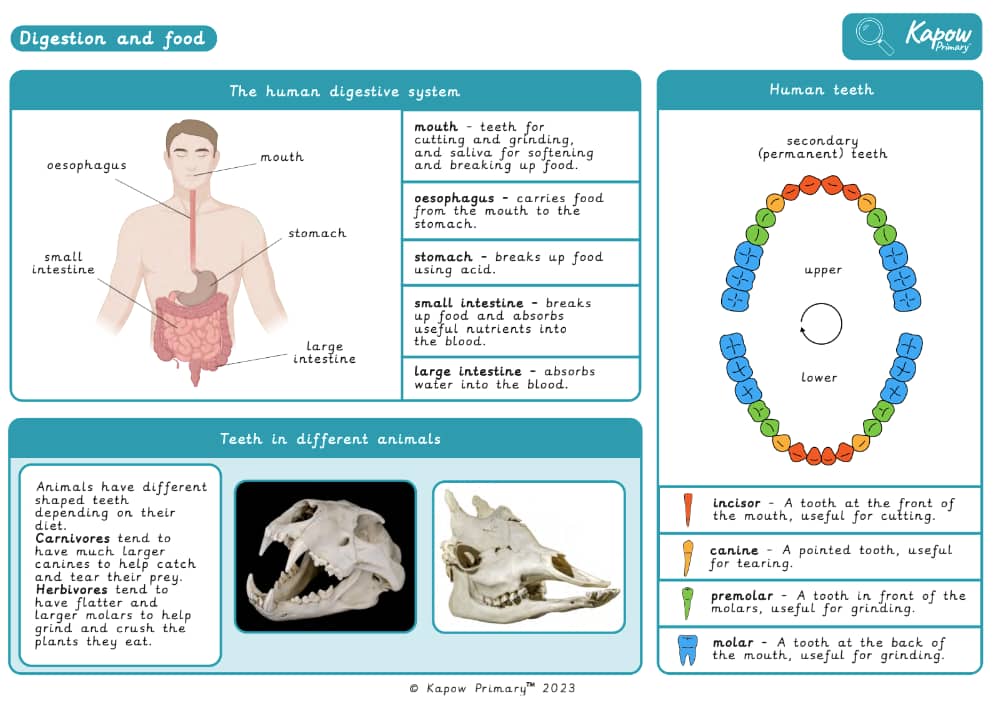
A Knowledge organiser that captures the essential knowledge and skills learnt throughout the unit Science, Year 4, Animals, including humans: Digestion and food.
This resource is designed to support children as they explore digestion and food. It highlights key vocabulary and concepts, including the human digestive system, the role of different types of teeth and how food is broken down and absorbed. The resource also examines how animals’ teeth are adapted to their diets and introduces food chains, showing how energy is transferred between living things. It is perfect for consolidating essential knowledge and fostering an understanding of how digestion, teeth and food chains are connected in the natural world.
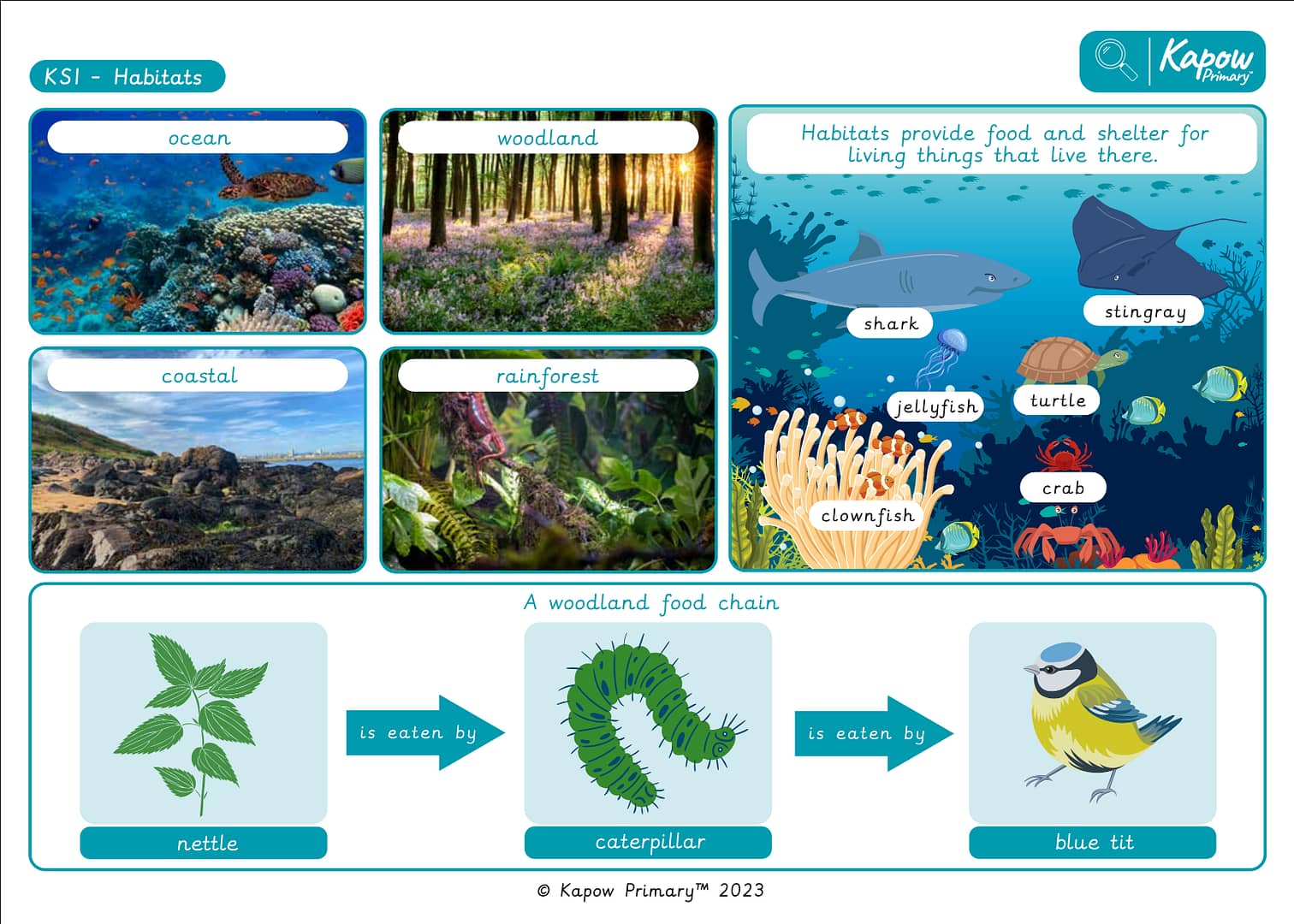
A Knowledge organiser that captures the essential knowledge and skills learnt throughout the unit Science, Year 2, Living things: Habitats.
This resource is designed to support the children as they explore different habitats. It highlights key vocabulary and concepts, including how habitats such as oceans, coastal areas, woodlands and rainforests provide food and shelter for living things. The resource introduces simple food chains to show how animals depend on one another for survival. It is perfect for consolidating essential knowledge and fostering an understanding of the relationships between plants, animals and their environments.
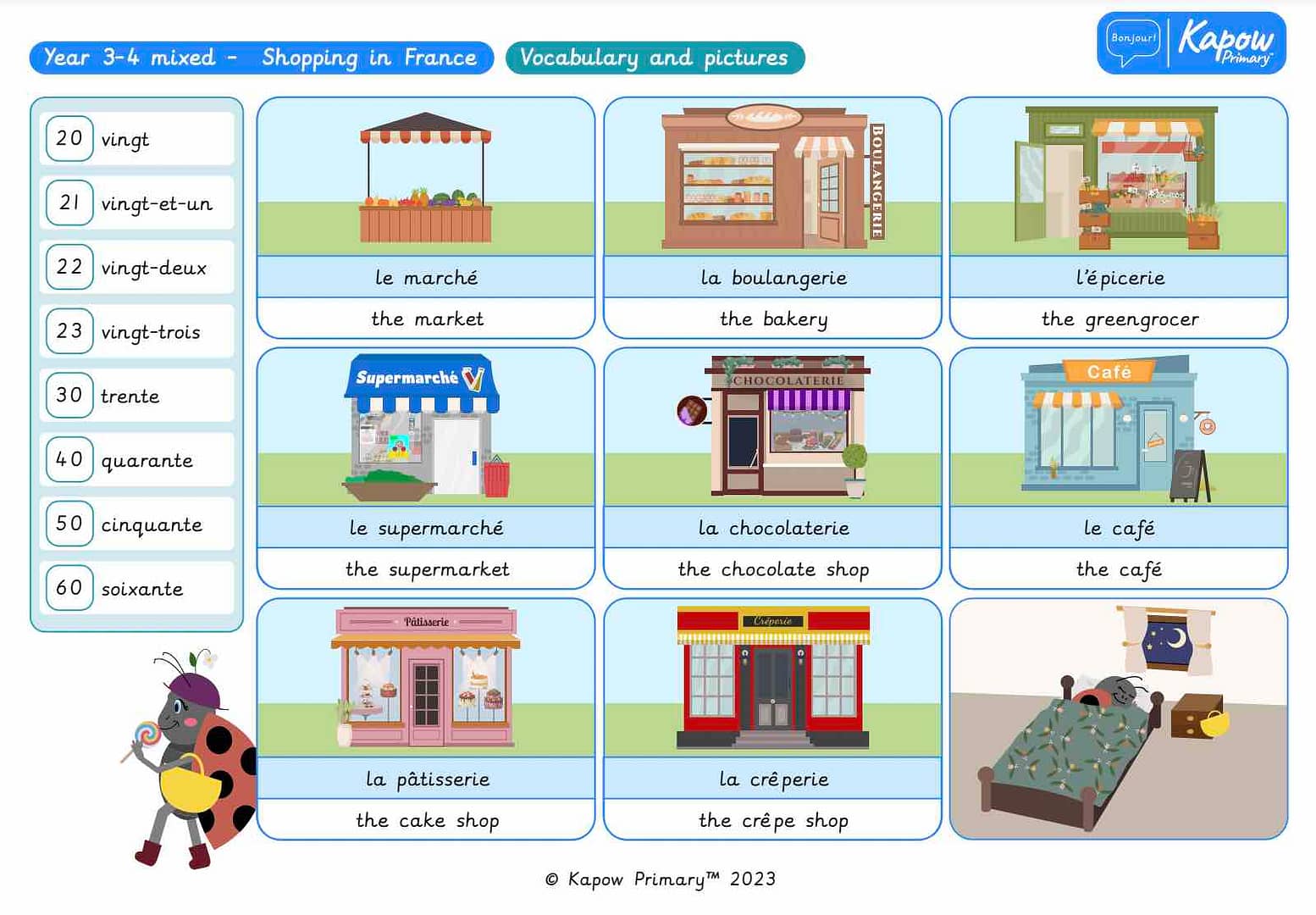
A Knowledge Organiser that captures the essential knowledge and skills learnt throughout the unit French, Year 3/4 (A), Shopping for French food.
This resource is designed to support pupils as they explore key vocabulary and sentence structures related to shopping experiences in French. It introduces names of common shops (e.g. la boulangerie, le marché, la crêperie), numbers from 20 to 60, and grammatical rules for using “to the”, “a/an”, and “it/them” in French. Example sentences such as “J’achète une pomme et je la mange” help pupils apply vocabulary in real-world contexts. Ideal for reinforcing pronunciation, grammar and vocabulary in an engaging and culturally relevant setting.
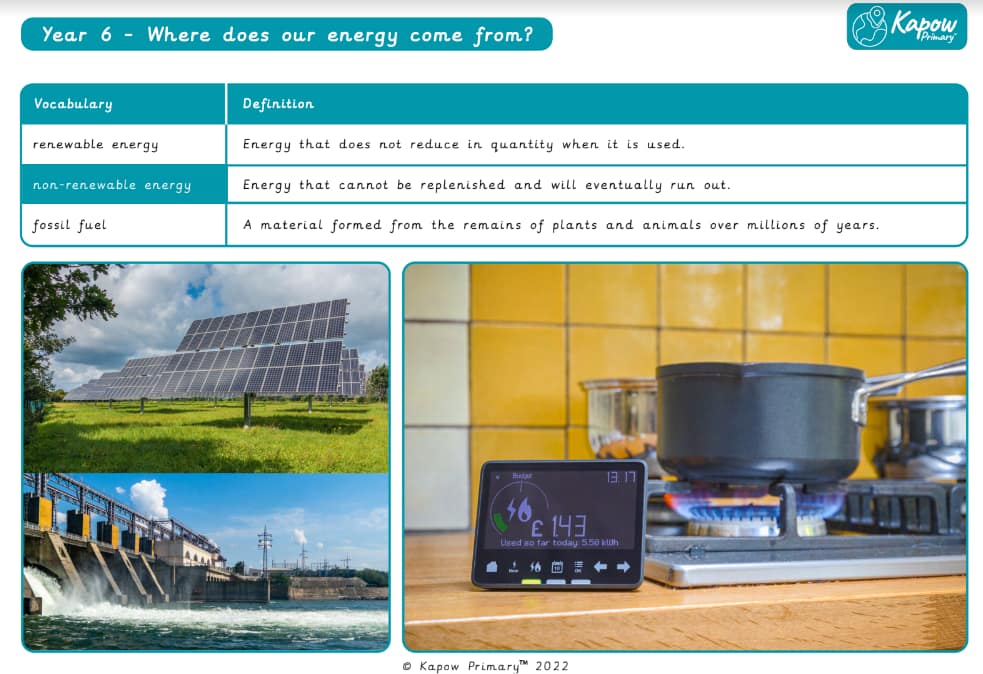
A Knowledge organiser that captures the essential knowledge and skills learnt throughout the unit Geography, Year 6, Where Does Our Energy Come From?
This Geography resource is designed to support the pupils as they explore different energy sources and their environmental impact. It introduces key vocabulary such as renewable, non-renewable, fossil fuels, and solar power, helping the pupils understand how energy is generated and used. The pupils will also learn about the advantages and disadvantages of different energy sources and how choices about energy consumption affect the planet.






